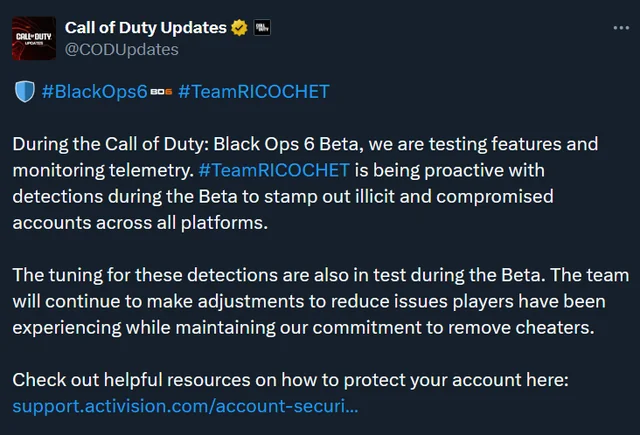Anti-cheat systems have advanced far beyond simple file or process scanning. Today’s detection engines rely heavily on behavioral analysis and telemetry data to identify cheaters — even those using external hardware setups such as DMA cards.
These systems don’t need to see your cheat files. Instead, they watch how you play — and that’s often enough to expose automation or machine-driven aim behavior.

What Is Behavioral Analysis in Anti-Cheats?
Behavioral analysis refers to detecting cheats based on player behavior patterns, not system-level intrusions. By analyzing how players move, aim, and react in-game, anti-cheats can determine whether those inputs resemble human performance or automated precision.
This technique is highly effective because cheats — even undetectable ones — produce mechanical, consistent, and non-random gameplay data.
Common Behavioral Analysis Techniques
- Crosshair Path Tracking:
Anti-cheats record how the crosshair moves between targets. Real aim involves micro-adjustments and overshooting; aimbots use perfect linear motion or spline smoothing. - Reaction Time Profiling:
Instantaneous aiming or repeated sub-50ms reaction times across multiple sessions raise strong suspicion of automation. - Target Switching Logic:
Players don’t consistently switch targets at mathematically perfect angles. Aimbots do. - Accuracy Over Time:
Sudden jumps in accuracy or recoil control patterns outside the statistical human range trigger deeper investigation.
What Are Telemetry Flags?
Telemetry flags are automated warnings generated when gameplay data statistically deviates from normal player behavior.
Anti-cheats collect large volumes of telemetry — everything from aim acceleration to shot distribution — and compare them to baseline human models.
Examples of Telemetry Data
- Mouse and analog stick movement curves
- Target acquisition time
- Reaction time variance
- Hit ratios per weapon type
- Time-to-kill averages across matches
- Recoil control regularity
When multiple telemetry metrics align abnormally, the system assigns a telemetry flag. One flag alone isn’t a ban, but repeated anomalies can lead to automated or manual action.
How Telemetry Flags Can Detect Suspicious ESP Behavior
Modern anti-cheats don’t just monitor aim or input — they also analyze player behavior relative to the game world, including actions influenced by ESP or wallhacks. For example, if a player consistently centers their crosshair on enemies through walls or reacts instantly the moment an enemy becomes visible, telemetry can detect this pattern as statistically improbable for a human.
Even without accessing cheat software directly, anti-cheats can flag repeated abnormal positioning, target acquisition, and aim timing that align with known ESP usage. Combined with other telemetry data, these behavioral patterns increase the likelihood of detection and can lead to warnings, manual review, or bans.
DMA Cards and Why They Don’t Prevent Behavioral Bans
DMA (Direct Memory Access) hardware is often used by cheat developers to read and process game memory externally without running detectable code on the target machine. This method bypasses kernel-level anti-cheats that look for injected drivers or processes.
However, while DMA setups can hide how a cheat reads memory, they cannot hide how the player behaves in-game.
Why DMA Doesn’t Protect Against Telemetry Detection
Behavioral data is server-side:
Anti-cheats like Ricochet, BattlEye, and Vanguard analyze input and gameplay metrics from the game server — completely outside your local machine. No DMA spoofing or kernel-level bypass affects that.
Aim and reaction patterns remain machine-like:
If your DMA aimbot locks onto targets with pixel-perfect precision or identical reaction times, telemetry systems will detect those patterns regardless of where the data originated.
Machine learning detection models:
Modern anti-cheats use ML models trained on millions of real player datasets. Even small deviations in movement or firing timing can stand out as statistically impossible for humans.
Cross-session correlation:
Behavioral anomalies are stored and correlated over time. Even if a DMA cheat looks human for a few matches, consistent unnatural precision eventually triggers a pattern flag.
In short — DMA only hides the cheat’s existence at the hardware level, not its effects. Telemetry-based analysis sees the results of cheating, which means a DMA setup provides no immunity against behavioral detection.
The Future of Behavioral Anti-Cheat Systems
Behavioral and telemetry-based anti-cheats are becoming the industry standard across multiplayer titles like Call of Duty, Apex Legends, and Rainbow Six Siege.
Developers are prioritizing data-driven analysis over client-side scanning because it’s nearly impossible for cheaters to manipulate server-side statistics. As machine learning improves, these systems will get even better at distinguishing genuine human skill from automated precision — even in hardware-based setups.
Final Thoughts
Modern anti-cheats don’t need to scan your files to catch you — they can analyze how you aim, react, and move.
DMA cards may bypass kernel detection, but telemetry doesn’t lie. Unnatural accuracy, robotic aim patterns, and impossible consistency still expose cheating behavior, no matter how sophisticated the bypass.
Want To Get Started With DMA Cheats?
Click Here to Join our exclusive Discord community to get started cheating in your favorite video games!
- COMMUNITY: Connect with fellow DMA gamers and find teammates
- UPDATES: Be the first to know about new updates and features
- SUPPORT: Get personal help and tips directly from me

Pingback: Ferrum AIM Device for DMA Aimbot 2025